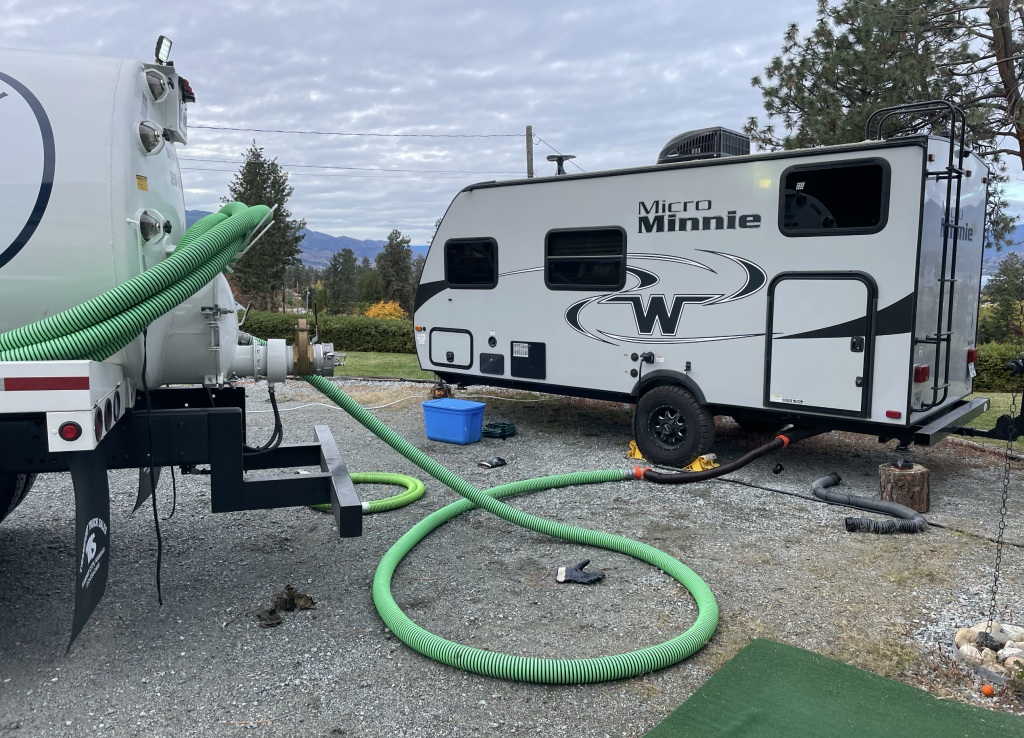Kelowna Septic System Repair: Preventative Services Near You
Wiki Article
Septic System Repair Kelowna: Septic Line Repair
Septic techniques serve as a vital alternative to centralized sewage treatment for houses not linked to municipal sewer systems. Understanding how septic techniques work is essential for owners, as proper maintenance can extend the life of the system and ensure a hygienic residing environment. At their core, septic systems operate by treating wastewater generated from daily family actions such as showering, bathroom use, and washing dishes. The main parts of a septic system include the septic tank, soil absorption system, and the drain area. Wastewater from the house flows into the septic tank where preliminary treatment begins. The tank is often constructed from concrete, fiberglass, or plastic and is buried underground. This tank holds sewage long enough for solids to settle on the backside, forming sludge, while lighter supplies like grease and oil float to the highest, creating scum. As wastewater enters the septic tank, it fills to a specific degree after which gradually exits via an outlet pipe. This outlet pipe results in the drain field, a crucial area for additional treatment of the wastewater. Designed with a sequence of perforated pipes buried in gravel, the drain field allows treated water to slowly seep into the encircling soil. The soil acts as a pure filter, further breaking down harmful bacteria and nutrients earlier than the water enters the groundwater provide.
Reliable Septic Services Kelowna: Dependable Septic Contractors
The organic processes throughout the septic tank play an important role in breaking down stable waste. Anaerobic micro organism thrive in the oxygen-deprived environment, consuming organic matter and lowering the quantity of sludge. Over time, the bacteria convert waste into less complicated compounds, enabling the treated effluent to flow into the drain subject. Nevertheless, this process depends on the balance of microorganisms throughout the tank, making it crucial to avoid introducing dangerous chemical compounds that can disrupt this ecosystem.
The drain field is an integral part as it disperses the handled wastewater into the ground. Every drain area has a particular design based mostly on soil type, panorama, and local regulations. The depth and width of trenches within the drain field should be planned fastidiously to ensure optimum drainage and filtration. Over many years, soil particles, microorganisms, and natural matter continuously work together to purify the treated effluent.
Kelowna Septic System Maintenance: Fixing Leaks, Clogs, and More
While septic methods often operate effectively with minimal intervention, they do require regular maintenance to operate effectively. Pumping the septic tank each three to 5 years is important to remove accrued sludge and stop clogs. Failing to do so can lead to backups within the system, causing disagreeable odors and potential environmental contamination. Owners should also be vigilant about what goes into the system, avoiding flushing non-biodegradable objects or pouring poisonous chemical compounds down the drain.Bacterial components are sometimes marketed to homeowners as a approach to enhance the efficiency of their septic techniques. Nevertheless, many professionals advise against their routine use, as they'll upset the delicate steadiness of micro organism that already exists in a healthy septic tank. Regular pumping and maintenance ought to suffice for maintaining the system functioning successfully. Householders can better guarantee long-term performance by being proactive with their septic maintenance. In addition to common pumping, householders must manage their water utilization successfully. Diverting extra water away from the drain area is important; saturating the realm can hinder proper wastewater treatment. Implementing water-saving fixtures and spreading out laundry and dishwashing activities all through the week can prevent overwhelming the system.

Potential signs of septic system failure embrace slow drains, disagreeable odors, and pooling water near the drain subject. Addressing these issues promptly with the assistance of a professional can save owners from more intensive repairs down the line. Neglecting these signs can result in pricey repairs and environmental hazards.
Kelowna Septic Tank Maintenance: Affordable Service
Local regulations often influence how septic systems are designed and put in. Owners are usually encouraged to consult with professionals conversant in local codes to ensure they are in compliance. In many areas, permits could also be required earlier than putting in a septic system, and these regulations assist keep public health and safety. One of probably the most vital advantages of septic systems is their capacity to reduce environmental air pollution. Correctly maintained methods treat wastewater on-site and can minimize impact on native water sources. This is especially essential in rural areas where municipal sewage systems could not exist, making septic methods essential for sustainable living. In conclusion, understanding how septic techniques work deepens the appreciation for the position they play in protecting public health and the environment. Householders can benefit from proper data of their septic techniques, including maintenance and care practices that prolong their usability. With sufficient consideration to regular repairs and adherence to native regulations, septic systems can provide safe and efficient wastewater treatment for a quantity of years. By treating waste responsibly, individuals contribute to a healthier ecosystem and guarantee the longevity of their investment in their septic techniques.- Septic methods are designed to treat wastewater from homes not linked to a centralized sewage system, utilizing a combination of organic and mechanical processes.
- Wastewater enters the septic tank, where solids settle to the underside, forming sludge, while lighter supplies like grease float to the top, creating scum.
- Bacteria inside the septic tank play a crucial function in breaking down organic matter, aiding within the decomposition process and reducing the quantity of solid waste.
- Periodic maintenance is crucial, including pumping the tank each three to five years, to forestall clogs and ensure optimum functioning.
- After the treatment in the septic tank, partially clarified wastewater flows right into a drain field, the place it's further filtered by way of soil, removing pathogens and vitamins.
- The drain field consists of a sequence of perforated pipes laid out in trenches, designed to disperse effluent evenly and promote pure filtration.
- Correctly functioning septic methods assist protect groundwater and surface water from air pollution, essential for maintaining total environmental health.
- Owners ought to keep away from utilizing harsh chemicals or flushing non-biodegradable gadgets, as they can disrupt the pure bacterial processes within the septic system.
- Landscaping decisions over septic systems—like planting grass as a substitute of trees—can prevent root intrusion which will harm pipes and compromise the system's integrity.
- Monitoring for signs of failure, such as sluggish drains, foul odors, or moist spots in the yard, can help tackle potential points before they escalate into pricey repairs. How Septic Techniques Work
Skilled Septic Technicians Offering Services in Kelowna and West Kelowna
What is a septic system and the way does it function?undefinedA septic system is an underground wastewater treatment construction sometimes used in rural areas. It functions by amassing and treating household wastewater through a series of processes together with settling, anaerobic digestion, and soil filtration. Wastewater flows into the septic tank, where solids settle on the backside, and effluent is launched into the drain area for further treatment in the soil (best septic tank installers Kelowna BC). How do I know if my septic system is functioning properly?undefinedSigns of a malfunctioning septic system embrace sluggish drains, unpleasant odors across the tank or drain area, standing water in your yard, and sewage backup in plumbing fixtures. Regular inspections and pumping each 3-5 years might help ensure proper functioning and establish potential points early. What maintenance do septic systems require?undefinedSeptic techniques require regular pumping to remove amassed solids and stop clogs. Moreover, you should avoid flushing non-biodegradable objects and restrict usage of harsh chemical substances that can disrupt the bacterial steadiness important for proper breakdown of waste.Residential Septic Services Kelowna: Expert Septic Tank Care
How long does a septic system last?undefinedWith proper maintenance, a septic system can final 20 to 30 years or extra. Components affecting longevity embody system design, soil situations, maintenance frequency, and the quantity of wastewater generated. What ought to I keep away from placing down my drains if I have a septic system?undefinedKeep Away From flushing non-biodegradable objects, corresponding to try this web-site wipes, sanitary merchandise, and plastics. Moreover, decrease the disposal of fat, oils, grease, and harsh chemical substances that may harm the bacteria needed for effective waste degradation.
Okanagan Septic Services: Kelowna Septic Services
Am I Able To plant grass or shrubs over my septic system?undefinedYes, you'll have the ability to plant grass over your drain area because it helps with absorption and erosion control. Nevertheless, it is essential to keep away from deep-rooted trees and enormous shrubs as their roots can harm the septic system components. What occurs throughout a septic system inspection?undefinedDuring an inspection, knowledgeable will consider the septic tank, check the effluent degree, assess the drain subject, and look for signs of malfunction. They can also inspect the distribution field and any pumping mechanisms to ensure every thing is working correctly. septic system inspection checklist Kelowna.Emergency Septic Services Kelowna: Urgent Septic System Maintenance
How a lot does it cost to put in a septic system?undefinedThe cost of putting in a septic system can vary widely relying on components similar to location, soil type, system size, and native regulations. On average, expenses can vary from $3,000 to $10,000 or extra, including permits and excavation work.Is it possible to convert to a septic system from a conventional sewer system?undefinedSure, converting from a traditional sewer system to a septic system is feasible, however it requires a thorough analysis of local regulations, soil conditions, and plumbing preparations. Consulting knowledgeable is essential to make sure it is possible and compliant with native laws. Report this wiki page